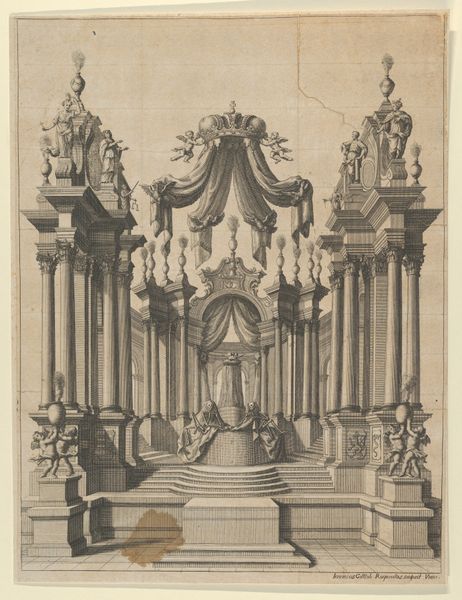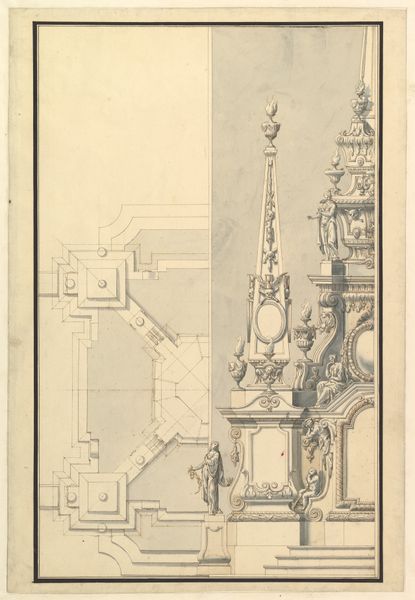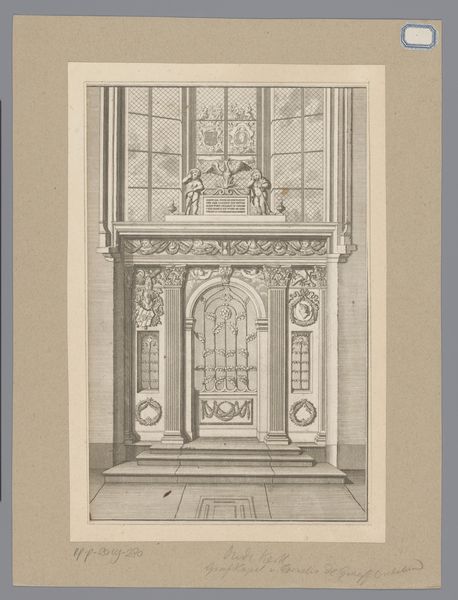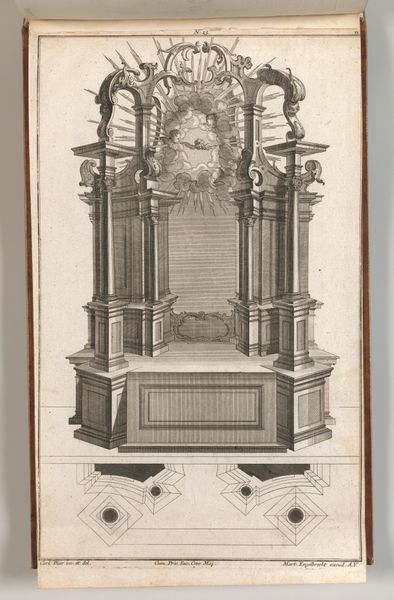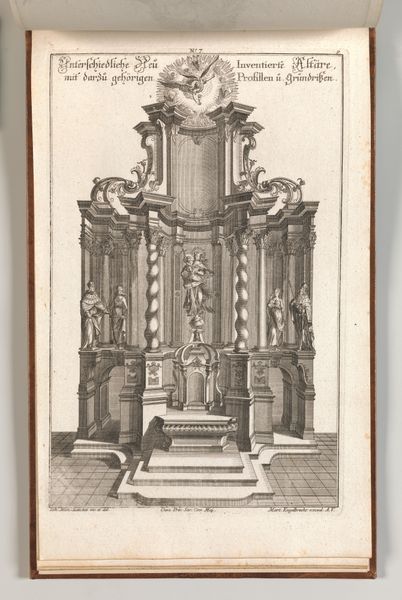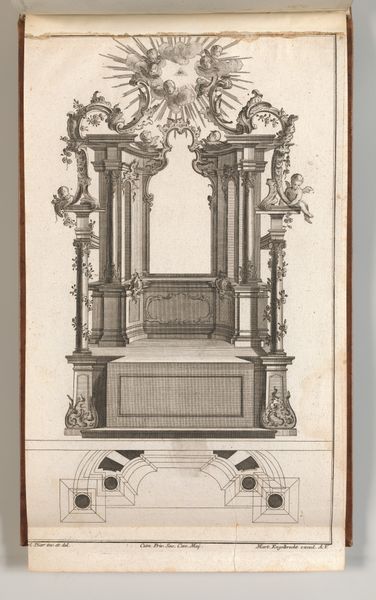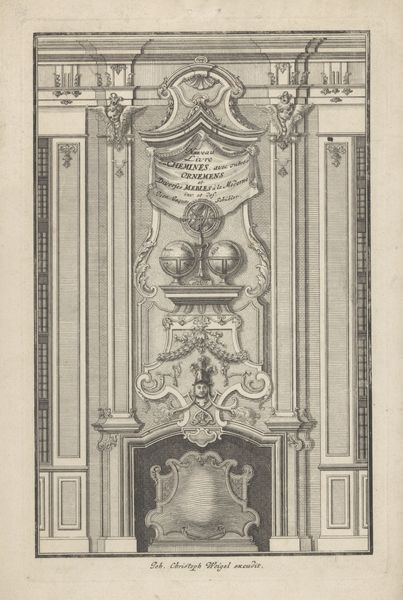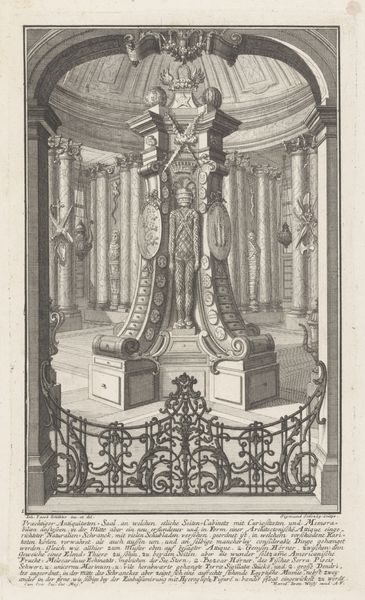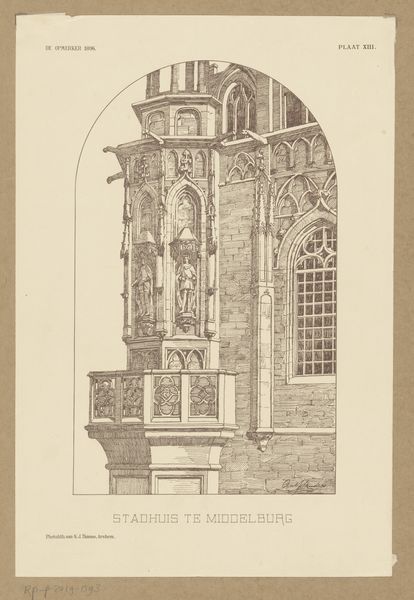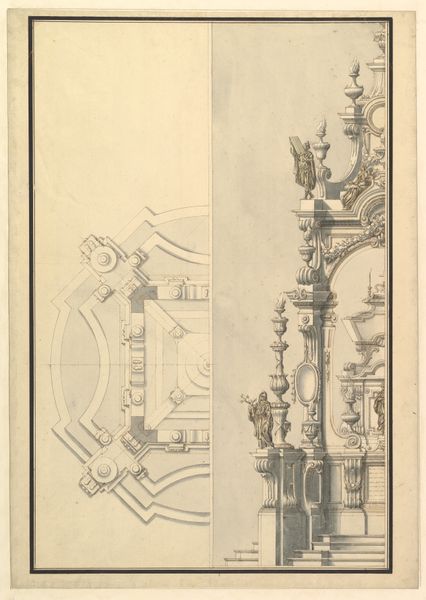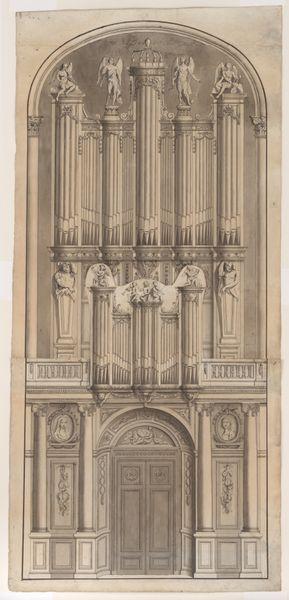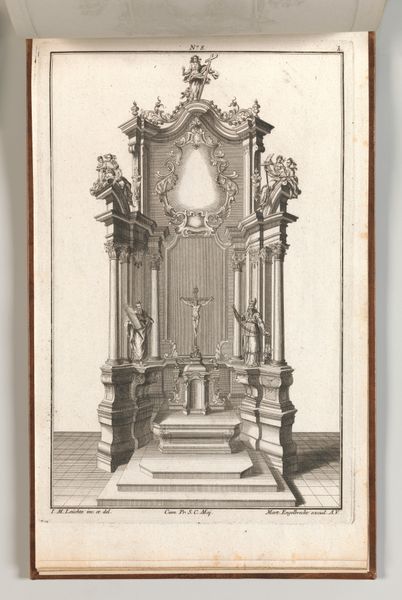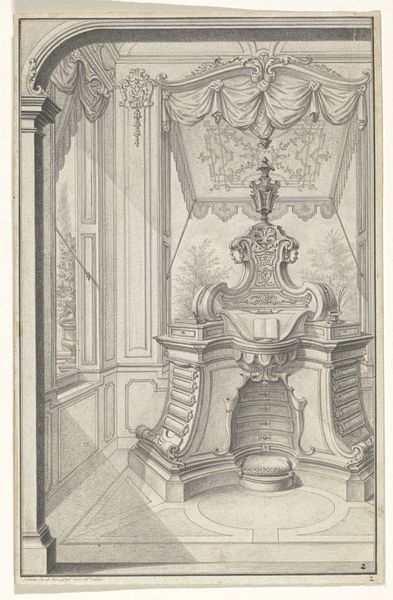
drawing, print, engraving, architecture
#
drawing
#
baroque
#
dutch-golden-age
# print
#
geometric
#
line
#
cityscape
#
engraving
#
architecture
Dimensions: height 347 mm, width 215 mm
Copyright: Rijks Museum: Open Domain
Curator: This engraving presents the "Orgel (Duyschotorgel) in de Westerkerk te Amsterdam," dating from around 1700 to 1749. It's attributed to an anonymous artist, rendered with delicate linework in the Baroque style. Editor: The intricacy is astounding! The linear precision, particularly in delineating the organ pipes and architectural details, suggests meticulous observation and rendering, despite the monochrome palette. Curator: Indeed. The artist masterfully captures the grandiose scale of the Westerkerk's organ and its surrounding architectural context. We observe classical elements interwoven with a sense of dynamism typical of the Baroque, yet constrained within a deliberately planned perspectival order. Editor: It's interesting to consider what such a print might have meant to its contemporary audience. Was it a celebration of civic pride, perhaps? Or a statement about Amsterdam's cultural achievements? Curator: Most certainly. The Dutch Golden Age was a period of intense mercantile activity, but the presence of such elaborate church architecture in the center of a metropolis communicates the powerful nexus of politics, religious organization, and financial capital. One would wager that images of this type reinforced those hierarchies and principles for the people. Editor: You're right, that hierarchy is reflected so vividly in the very composition, this reaching toward heaven through geometric ordering principles—it creates an immediate impression of structured authority. Curator: Also note the fine print beneath the illustration. These carefully lettered descriptions were intended to inform viewers about the details of its design and location, highlighting the building’s presence. Editor: Reflecting on it now, I'm struck by how such precision and detail communicate not just the appearance of the organ, but the values of the era that produced it. Curator: The study of works like this provide insights into a historical context that resonate still in the present day.
Comments
No comments
Be the first to comment and join the conversation on the ultimate creative platform.
